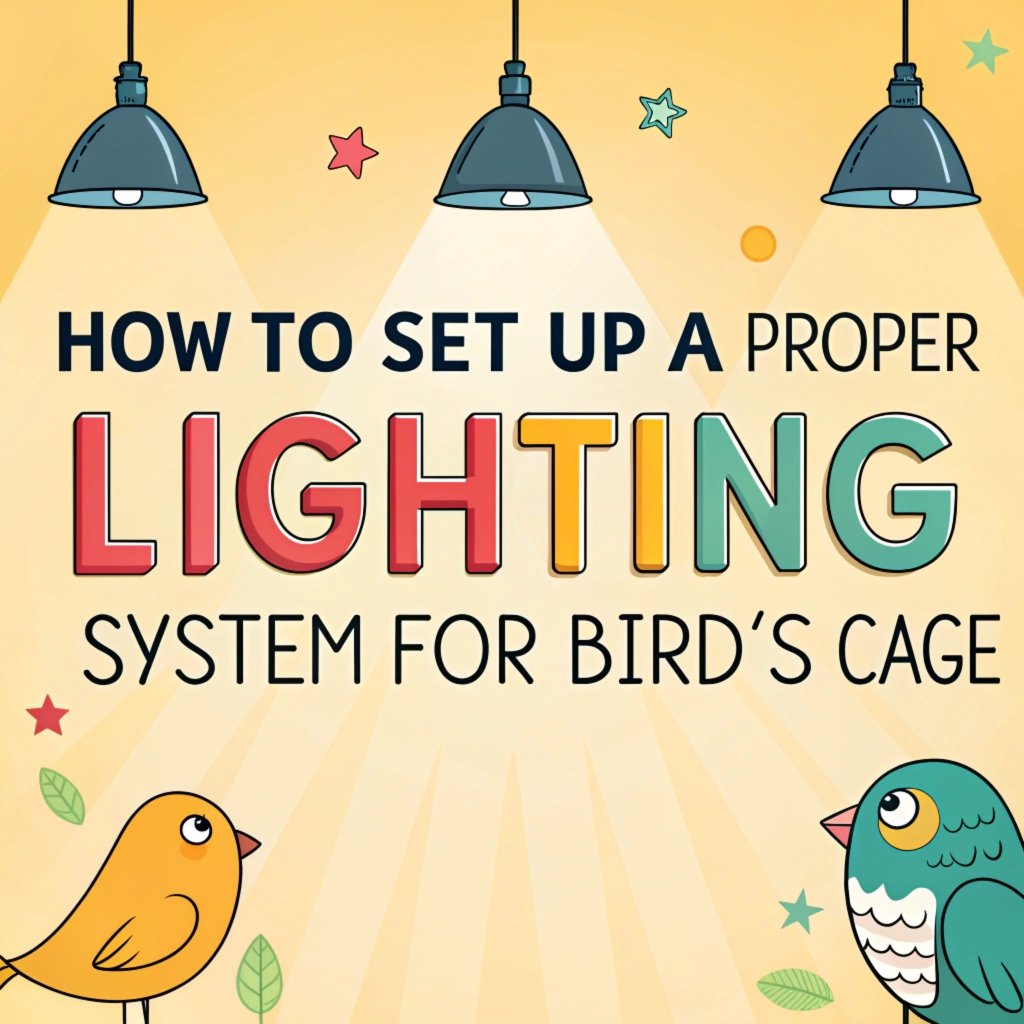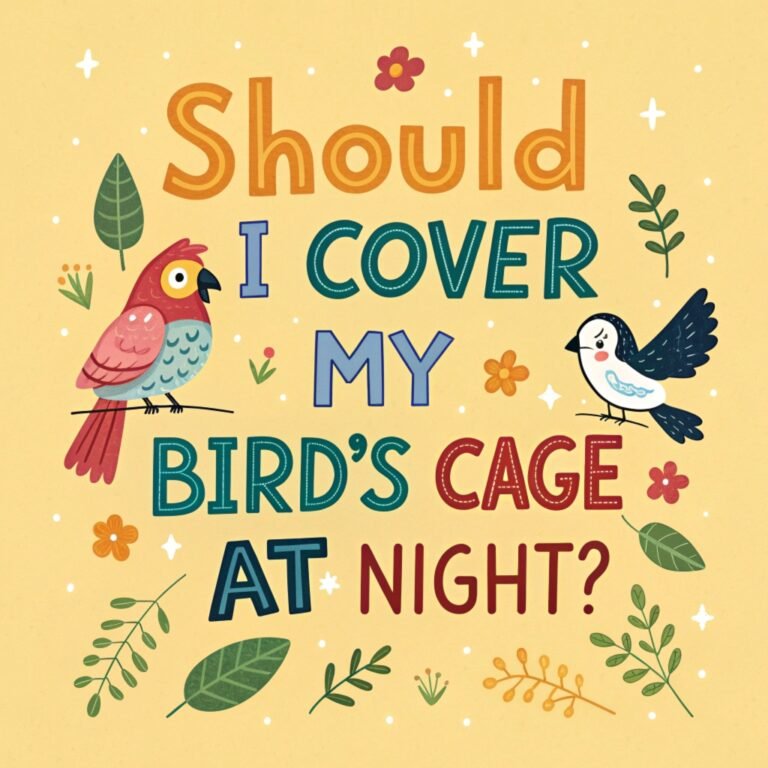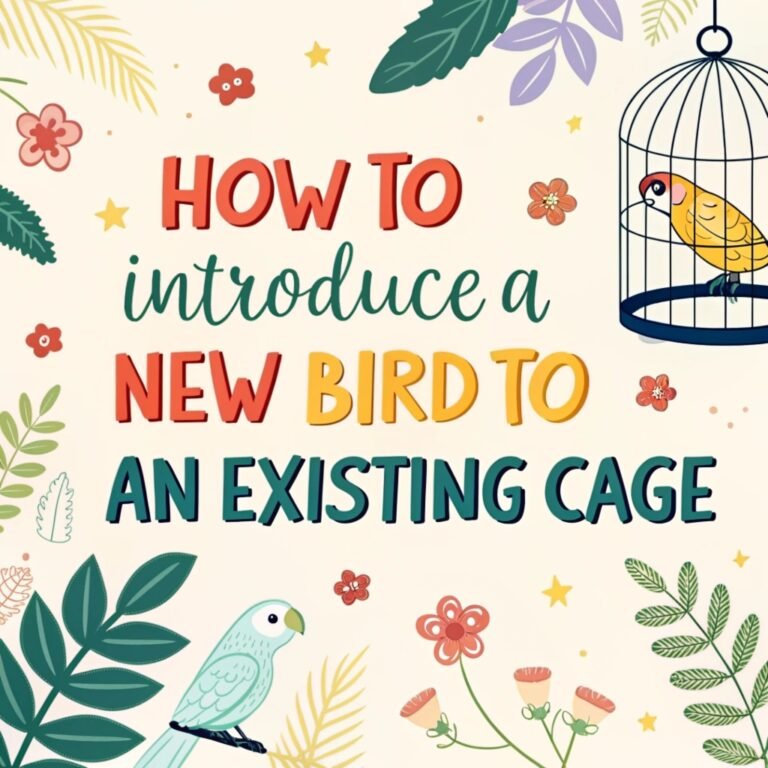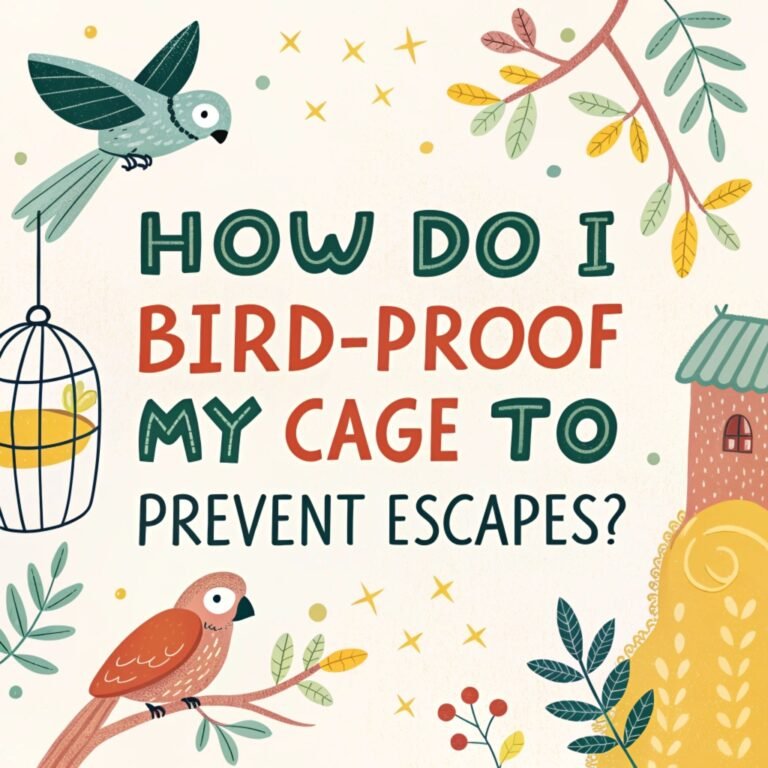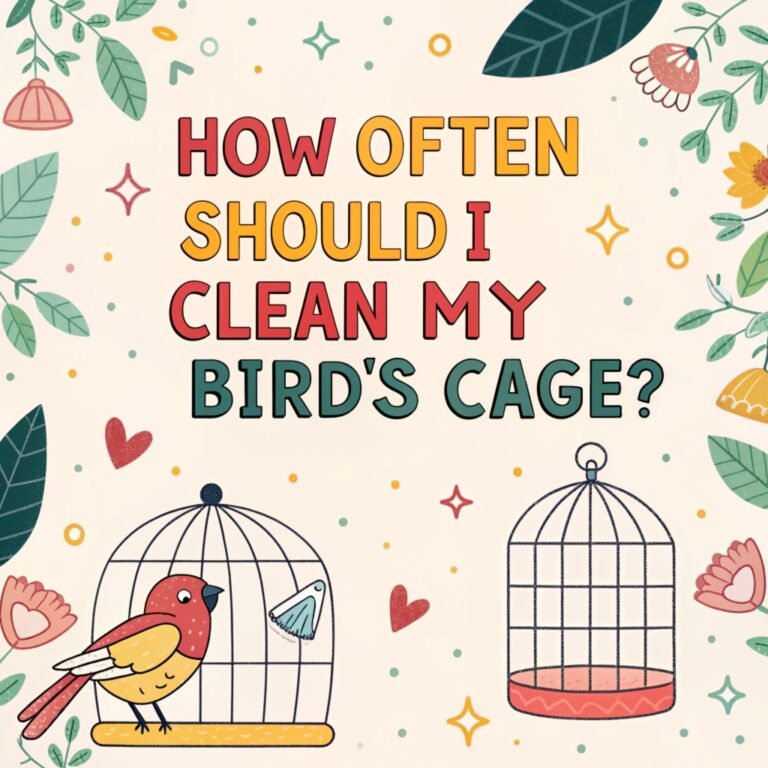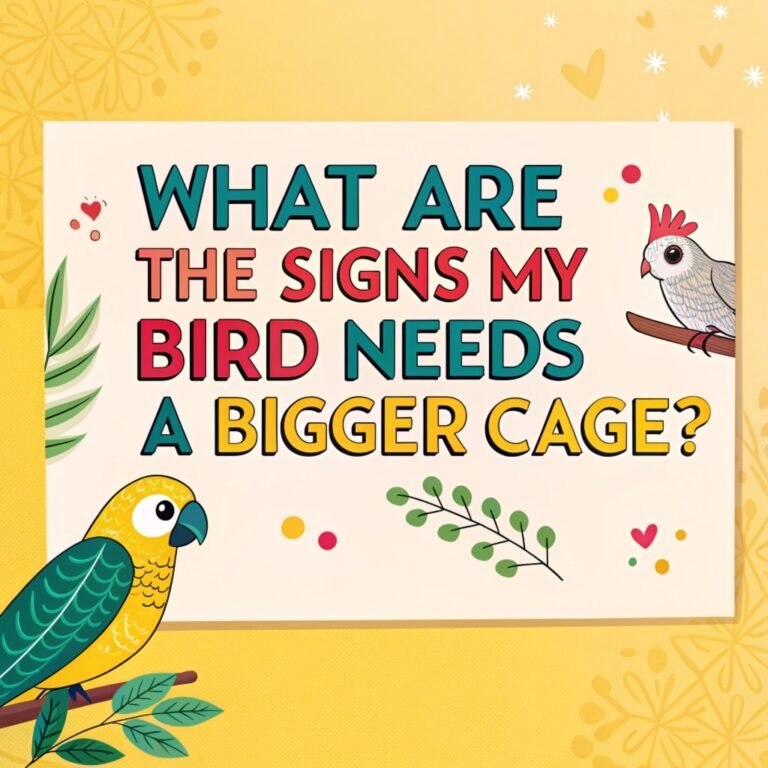How To Set Up A Proper Lighting System For Bird’s Cage? – Enhancing Avian Health and Happiness
Their ability to perceive a wider spectrum of colors, including ultraviolet light, plays a crucial role in their overall well-being.
Birds are remarkable creatures with unique visual capabilities that far surpass those of humans.
As responsible pet owners, it’s essential to provide our feathered friends with an environment that closely mimics their natural habitat, especially when it comes to lighting.

Key Takeaways:
Before we delve into the details, let’s highlight some crucial points to remember when setting up a lighting system for your bird’s cage:
- Brightness matters: Birds require significantly more light than humans to see in color, often 5-20 times brighter than what we consider adequate.
- Color temperature is crucial: Aim for a color temperature of 5000K to 5700K to mimic natural sunlight and support your bird’s visual needs.
- UV light is essential: Incorporate full-spectrum lighting with UV-B to replicate the benefits of natural sunlight for your bird’s health.
- Placement is key: Position lights 12-18 inches above the cage for optimal exposure without causing stress or overheating.
- Timing matters: Provide about 10-12 hours of light daily, adjusting the duration to mimic seasonal changes.
- Avoid flickering: Ensure your lighting system is flicker-free to prevent stress and discomfort for your bird.
- Consider interior lighting: Cage-mounted LED strips can significantly improve lighting conditions, especially for cages with solid tops.
- Gradual transitions: Implement a system that allows for gentle dimming and brightening to simulate dawn and dusk.
- Safety first: Always use bird-safe, chew-resistant fixtures and cords to prevent accidents.
- Regular maintenance: Replace bulbs and clean fixtures regularly to maintain optimal light quality and intensity.
By keeping these key points in mind, you’ll be well on your way to creating a lighting environment that supports your bird’s visual needs and overall health.
Understanding Avian Vision: The Foundation of Proper Lighting
To set up an effective lighting system for your bird’s cage, it’s crucial to understand the unique characteristics of avian vision.
Birds have superior visual acuity compared to humans, with photoreceptors that are eight times denser than those in the human eye.
This allows them to focus on their entire field of view simultaneously, a capability that’s essential for their survival in the wild.
Moreover, birds can perceive a much wider range of colors, including ultraviolet light, which plays a vital role in their ability to recognize food, mates, and potential predators.
Their visual system is so advanced that they can see up to 200 times more colors than humans.
This heightened visual perception means that the lighting in their environment has a profound impact on their daily lives, affecting everything from their behavior to their physical health.
Understanding these aspects of avian vision is the first step in creating a lighting setup that truly meets your bird’s needs and enhances their quality of life in captivity.
The Importance of Full-Spectrum Lighting for Birds
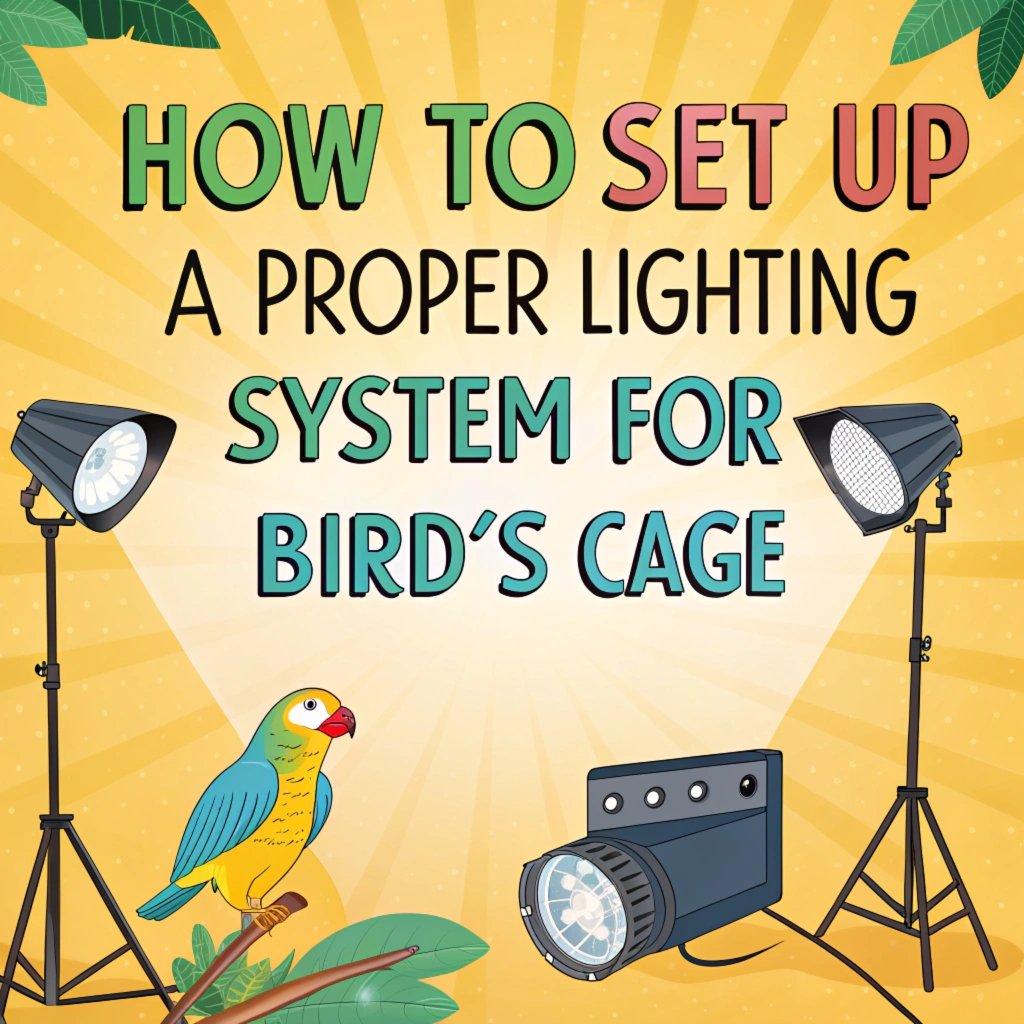
Full-spectrum lighting is a critical component of a proper lighting system for your bird’s cage. Unlike standard home lighting, which often lacks essential wavelengths, full-spectrum lights aim to replicate the natural sunlight that birds have evolved under.
These lights provide a balanced spectrum of colors, including the all-important ultraviolet (UV) light that birds can perceive.
UV light is particularly crucial for birds as it aids in the synthesis of vitamin D3, which is essential for calcium metabolism and overall bone health.
Additionally, full-spectrum lighting helps regulate your bird’s circadian rhythms, influencing their sleep patterns, breeding behavior, and molting cycles.
When choosing full-spectrum lights, look for options that specifically mention UV-B output, as this is the type of ultraviolet light that’s most beneficial for birds.
By incorporating full-spectrum lighting into your bird’s environment, you’re providing them with a more natural and health-promoting light source that supports their unique visual and physiological needs.
Selecting the Right Color Temperature for Your Bird’s Lighting
The color temperature of your bird’s lighting is a crucial factor that often gets overlooked. In the world of lighting, color temperature is measured in Kelvins (K) and refers to the warmth or coolness of the light.
For tropical birds, which many of our pet birds are, the ideal color temperature closely mimics that of their natural habitat. Aim for lights with a color temperature between 5000K and 5700K, which replicates the color of sunlight in tropical latitudes.
This range provides a balanced, natural-looking light that supports your bird’s visual needs without triggering unwanted behaviors.
Lights with lower color temperatures (more reddish) can stimulate breeding behavior, while higher temperatures (more bluish) may increase stress and feather destruction.
When shopping for bird-specific lighting, look for products that clearly state their color temperature.
Some excellent options include specialty fluorescent tubes like the Philips TL-950, which offers a color temperature of 5000K and a high Color Rendering Index (CRI) of 98, providing an excellent approximation of natural daylight for your feathered friend.
Achieving Optimal Brightness: Illuminating Your Bird’s World
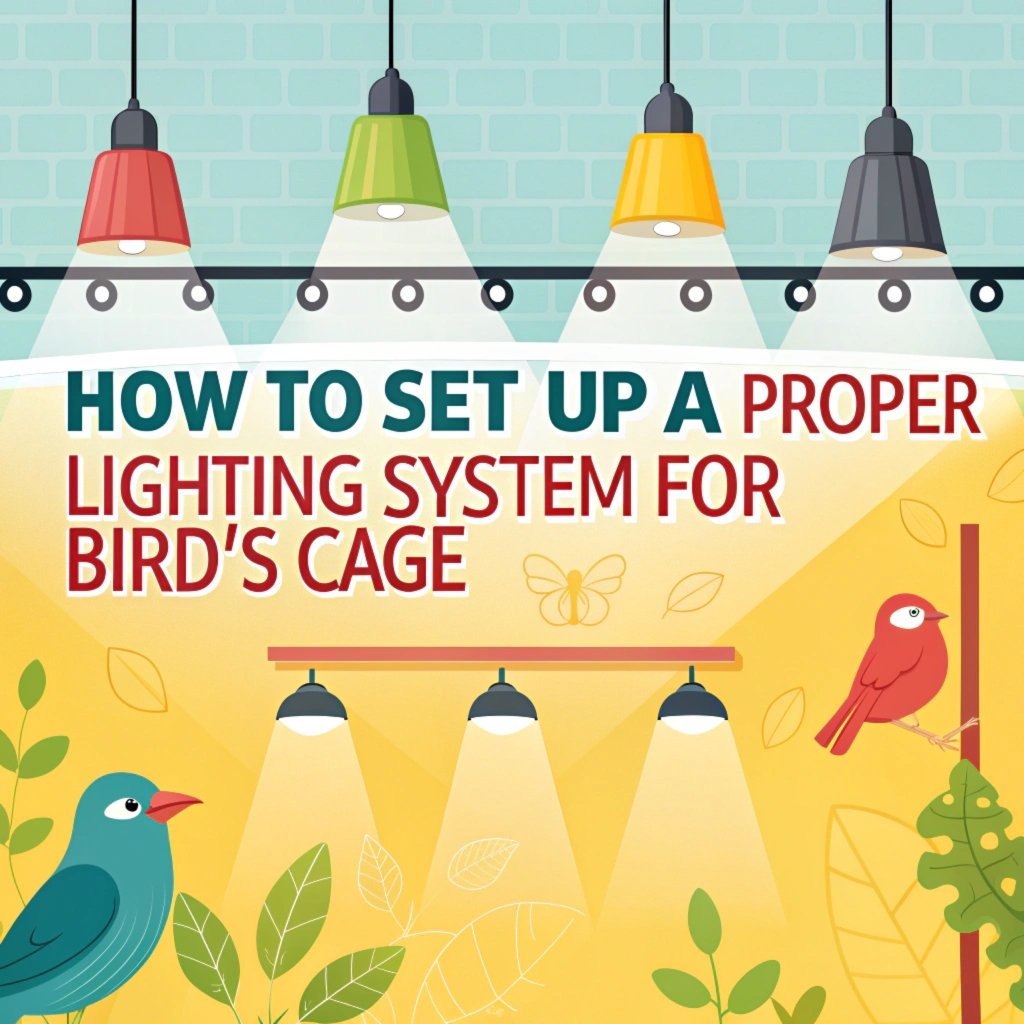
When it comes to lighting for birds, brightness is paramount. The lighting that humans find comfortable in their homes is often woefully inadequate for our avian companions.
Recent studies have shown that birds require five to twenty times more light than humans to see in color effectively. This means that even what we consider a well-lit room may appear dim and colorless to a bird.
To provide adequate brightness, consider using high-output LED lights or specialized avian lighting systems that can deliver the intensity birds need. When setting up your lighting, aim for a brightness level that mimics a clear sunrise or sunset at minimum.
This level of illumination ensures that your bird can perceive its environment in full color, supporting natural behaviors and reducing stress.
Remember, while this level of brightness might seem excessive to human eyes, it’s crucial for your bird’s visual comfort and overall well-being.
Always provide a gradual transition between light and dark periods to mimic natural daylight patterns and avoid startling your feathered friend.
Implementing a Day-Night Cycle: Mimicking Nature’s Rhythm
Creating a consistent and natural day-night cycle is essential for your bird’s well-being. In the wild, birds rely on the sun’s natural rhythm to regulate their biological processes, including sleep patterns, hormone production, and breeding behaviors.
To replicate this in captivity, it’s crucial to implement a lighting schedule that closely mimics natural daylight patterns. For most tropical birds, aim for about 10-12 hours of daylight, followed by a period of darkness.
Use a timer to ensure consistency in your lighting schedule, as birds thrive on routine. Gradually increase light intensity in the morning to simulate sunrise, and decrease it in the evening to mimic sunset.
This can be achieved with dimmable LED systems or specialized avian lighting controllers. Remember to adjust the lighting duration seasonally if you’re trying to replicate your bird’s natural habitat more closely.
Providing a consistent day-night cycle helps maintain your bird’s circadian rhythm, reducing stress and promoting overall health and natural behaviors.
Ultraviolet Light: The Hidden Necessity for Avian Health
Ultraviolet (UV) light plays a crucial role in avian health and well-being, yet it’s often overlooked in indoor bird care.
Birds can perceive UV light, which forms an integral part of their visual spectrum and contributes to their ability to see an astounding range of colors.
More importantly, UV-B light is essential for the synthesis of vitamin D3 in birds, which is crucial for calcium metabolism and overall bone health. In nature, birds receive ample UV exposure from sunlight, but indoor environments typically filter out most UV rays.
To address this, incorporate full-spectrum lights with UV-B output in your bird’s lighting system. These specialized lights provide the necessary UV radiation in safe, controlled amounts.
When selecting UV-emitting lights, ensure they’re specifically designed for birds and follow the manufacturer’s guidelines for placement and duration of exposure.
Remember, while UV light is beneficial, excessive exposure can be harmful, so always provide areas of shade within the cage where your bird can retreat if needed.
Positioning Your Lighting: Maximizing Benefits and Comfort
The placement of your bird’s lighting is just as important as the type of light you choose. Proper positioning ensures that your bird receives optimal light exposure without causing discomfort or stress.
As a general rule, place full-spectrum lights 12 to 18 inches above the cage. This distance provides adequate illumination while minimizing the risk of overheating.
Ensure that the light covers the entire cage area evenly, avoiding harsh shadows or overly bright spots. For larger aviaries or multiple cages, you may need to use several light fixtures to achieve uniform coverage.
Consider the natural behavior of your bird species when positioning lights. For example, some birds prefer higher perches, so ensure these areas are well-lit.
However, always provide some shaded areas within the cage where your bird can retreat if it wants to escape the bright light. If using UV-emitting lights, be particularly careful with placement, as too much UV exposure can be harmful.
Follow manufacturer guidelines and consult with an avian veterinarian if you’re unsure about the best setup for your specific bird species.
LED Lighting Solutions: Modern Technology for Avian Care
LED lighting has revolutionized the world of avian care, offering energy-efficient and customizable solutions for bird owners.
LED lights are particularly well-suited for bird cages due to their low heat output, long lifespan, and ability to produce a wide range of color temperatures and intensities.
Many bird-specific LED systems now come with built-in timers and dimming capabilities, allowing you to create a natural day-night cycle with ease.
One innovative solution is the use of LED strip lights designed specifically for bird cages. These strips can be mounted inside the cage, providing even illumination and minimizing shadows.
Look for options like the EZ PetLight with ChewGuard, which offers bright, flicker-free light and is designed to resist damage from curious beaks.
When choosing LED lights for your bird’s cage, prioritize options that offer full-spectrum output and are explicitly marketed for avian use.
While LED technology has made great strides, not all LED lights are suitable for birds, so always verify that the product meets avian lighting standards before installation.
Safety Considerations: Protecting Your Feathered Friend
When setting up a lighting system for your bird’s cage, safety should be your top priority. Birds are naturally curious and may attempt to chew on cords or fixtures, posing risks of electrocution or injury.
Always opt for bird-safe, chew-resistant fixtures and cords. Look for lighting systems specifically designed for avian use, as these often come with protective features.
If using standard lighting equipment, ensure all cords and connections are well out of your bird’s reach. Consider using cord covers or conduits to provide an extra layer of protection.
Be mindful of heat output from your lighting fixtures. While LED lights generally produce less heat, some full-spectrum bulbs can get quite warm.
Ensure there’s adequate ventilation around the fixtures and that your bird cannot come into direct contact with hot surfaces.
Regularly inspect your lighting setup for any signs of wear or damage, especially if you have a particularly destructive bird. Replace any frayed cords or damaged fixtures immediately.
Lastly, always provide your bird with areas of shade within the cage where it can retreat if the light becomes too intense.
Monitoring and Adjusting: Fine-Tuning Your Bird’s Lighting
Setting up your bird’s lighting system is not a one-time task; it requires ongoing monitoring and adjustment to ensure it continues to meet your feathered friend’s needs. Observe your bird’s behavior closely after implementing a new lighting setup.
Look for signs of increased activity, improved appetite, and better feather condition, which can indicate that the lighting is beneficial.
Conversely, watch for signs of stress or discomfort, such as excessive preening, lethargy, or attempts to avoid the light.
Be prepared to make adjustments based on your observations. You may need to alter the intensity, duration, or positioning of the lights to find the optimal setup for your specific bird.
Remember that lighting needs can change with the seasons or as your bird ages. Regularly consult with an avian veterinarian to ensure your lighting setup continues to support your bird’s health.
Additionally, keep track of when bulbs were last replaced, as the quality and intensity of light can degrade over time, even if the bulb still appears to be functioning.
By staying attentive and flexible, you can create and maintain a lighting environment that promotes your bird’s well-being year-round.
Natural Light vs. Artificial Light: Finding the Right Balance
While artificial lighting is crucial for indoor birds, it’s important not to overlook the benefits of natural sunlight. Natural light provides a full spectrum of wavelengths that are difficult to replicate artificially, including beneficial UV rays.
However, relying solely on natural light through windows is often insufficient, as glass filters out much of the UV spectrum. If possible, consider providing your bird with supervised outdoor time in a secure enclosure or flight cage.
This allows them to enjoy the full benefits of natural sunlight. When this isn’t feasible, aim to create a balance between natural and artificial light.
Position your bird’s cage near a window to allow some natural light exposure, but supplement with full-spectrum artificial lighting to ensure adequate brightness and UV exposure.
Be mindful of potential issues with natural light, such as overheating or drafts from windows. Always provide shaded areas where your bird can retreat if the sunlight becomes too intense.
Remember, while natural light is beneficial, it shouldn’t replace a well-designed artificial lighting system, especially during shorter winter days or in climates with limited sunlight.
Seasonal Adjustments: Adapting Your Lighting to Nature’s Changes
Just as daylight hours change with the seasons in nature, your bird’s lighting schedule should also undergo seasonal adjustments.
This is particularly important for species that naturally experience significant seasonal variations in their native habitats.
During spring and summer months, gradually increase the duration of light exposure to mimic longer days. This can help regulate your bird’s molting cycle and may influence breeding behavior in some species.
Conversely, in fall and winter, reduce light duration to reflect shorter days. These adjustments should be made gradually over several weeks to avoid stressing your bird.
Some advanced lighting systems come with pre-programmed seasonal settings that automatically adjust light duration and intensity throughout the year.
If you’re using a manual system, set reminders to adjust your timers regularly. Pay attention to how these changes affect your bird’s behavior and energy levels.
Some birds may become more active during “longer” days, while others might require more rest. Always provide a consistent period of darkness for sleep, regardless of the season.
By mimicking natural seasonal light changes, you can help maintain your bird’s natural rhythms and overall well-being.
Troubleshooting Common Lighting Issues for Bird Cages
Even with careful planning, you may encounter some challenges when setting up and maintaining your bird’s lighting system. One common issue is uneven light distribution within the cage.
This can be addressed by using multiple light sources or adjusting the position of existing lights.
If you notice your bird avoiding certain areas of the cage, it may indicate too much or too little light in those spots.
Another frequent problem is flickering lights, which can be stressful for birds. If you observe flickering, especially in fluorescent or LED lights, replace the bulbs or fixtures immediately.
Some birds may show signs of stress when new lighting is introduced. This can include increased vocalization, agitation, or attempts to hide.
In such cases, try introducing the new lighting gradually, starting with shorter durations and lower intensities. If your bird seems lethargic or shows reduced appetite despite proper lighting, consult an avian veterinarian, as these could be signs of other health issues.
Lastly, be aware of any unusual wear on light fixtures or cords, which could indicate your bird has been chewing on them. Address these safety hazards promptly to prevent accidents.
FAQs
What type of light bulb is best for my bird’s cage?
Full-spectrum LED or fluorescent bulbs designed specifically for birds are ideal. Look for bulbs with a color temperature between 5000K and 5700K that include UV-B output.
How many hours of light does my bird need each day?
Most tropical birds require about 10-12 hours of light daily. However, this can vary by species, so research your specific bird’s needs or consult an avian veterinarian.
Can I use regular household LED bulbs for my bird’s cage?
While regular LED bulbs can provide brightness, they lack the full spectrum and UV output that birds need. It’s best to use specialized avian lighting for optimal health benefits.
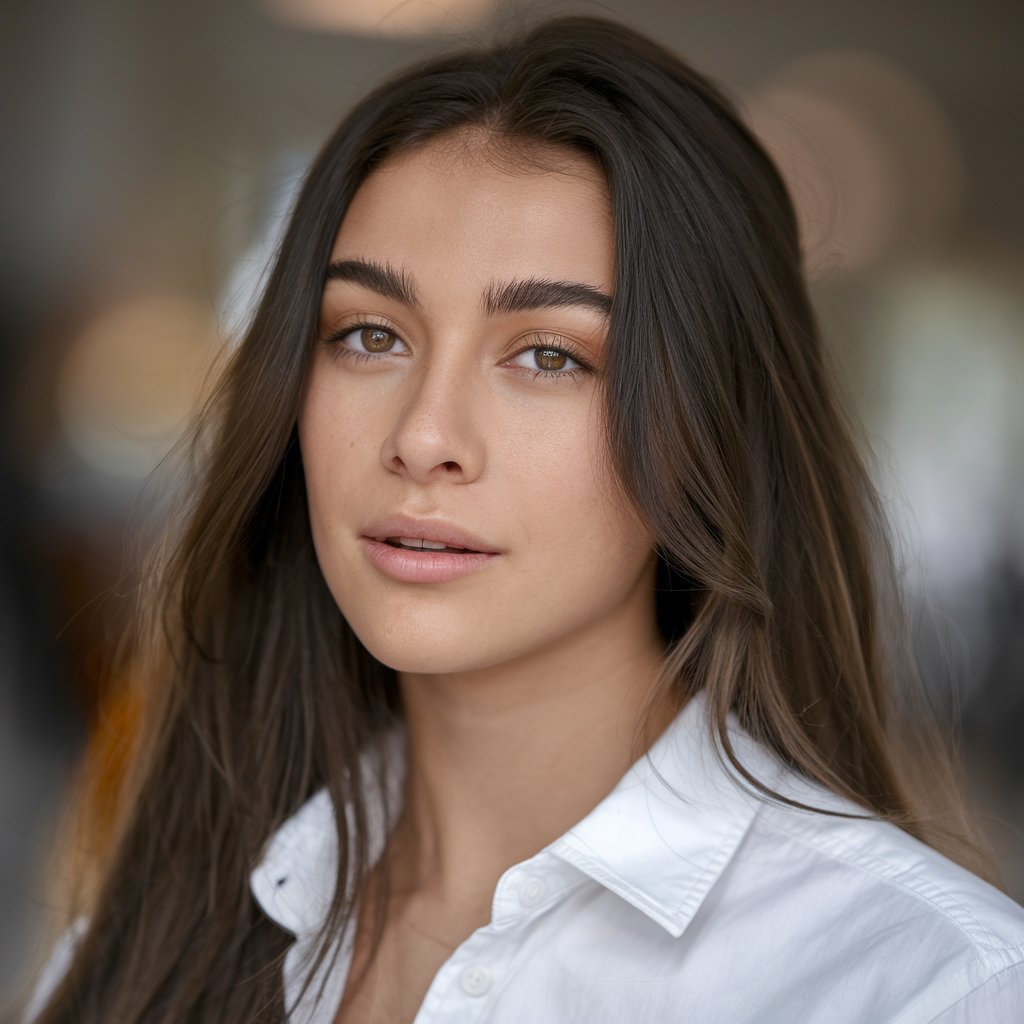
Hello, I’m Amelia White, the founder of birdsfanatic.com. As a lifelong bird enthusiast and spiritual seeker, I’ve always been fascinated by the mystical connections between birds and the human experience. On this site, I share my knowledge and insights into the symbolic meanings and spiritual significance of various bird species, exploring their roles in mythology, folklore, and cultural traditions. Join me on this journey into the world of birds, where we’ll discover the hidden wisdom and guidance that these magnificent creatures have to offer.

